COOK ISLANDS CRAFTS
Art from the heart
Rito hat making and patchwork quilting (tivaevae) are art from the heart skills handed down through generations with islanders producing uniquely beautiful creations that are part of cultural life
RITO HATS
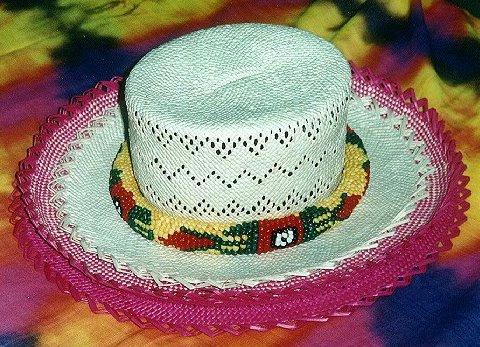
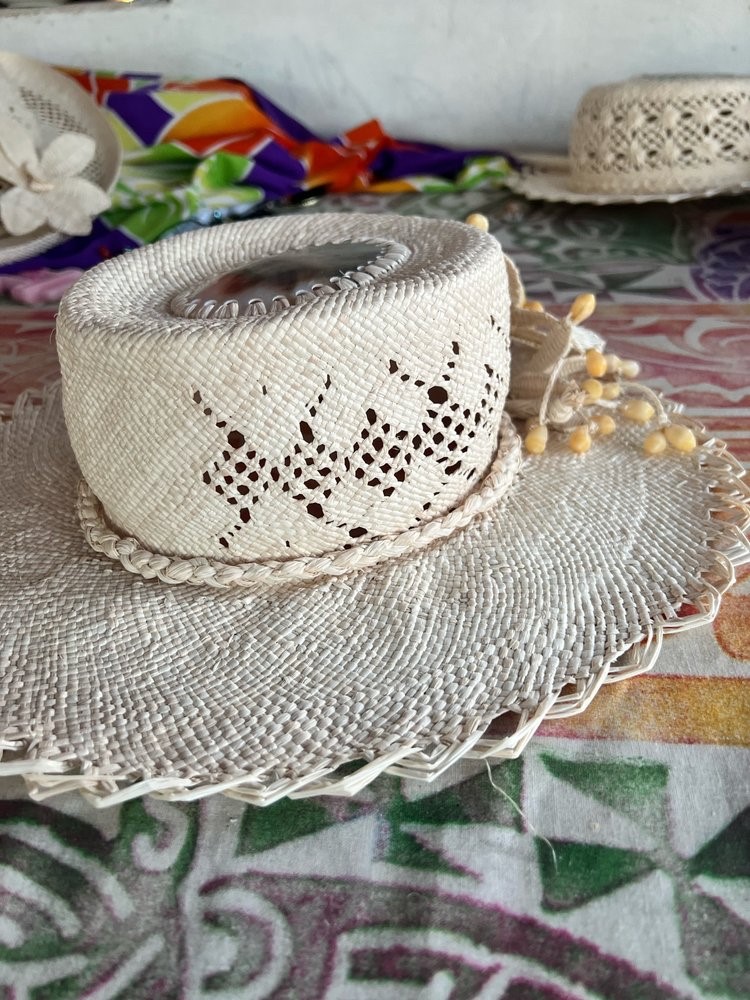
Any Sunday on any of the Cook Islands, you can expect to see some of the finest hats in the world, adorning the heads of women on their way to church. Rito (pronounced ree-toe or lee-toe) hats are justly prized and come out also for special occasions such as baptisms and weddings. The home of rito hat making is the Northern group island of Penrhyn
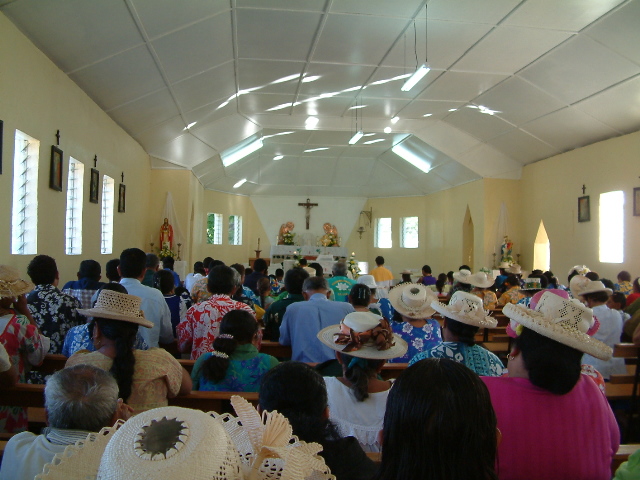
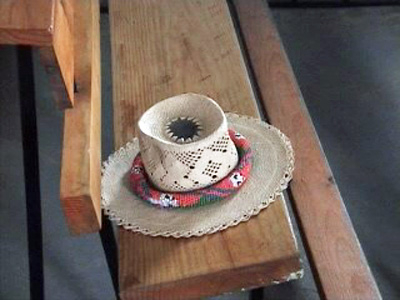
Hats and church go together throughout the Islands. I found a fine example on a pew in the Ziona Church ("The Divided Church") on Mauke
THE PROCESS ON PENRHYN
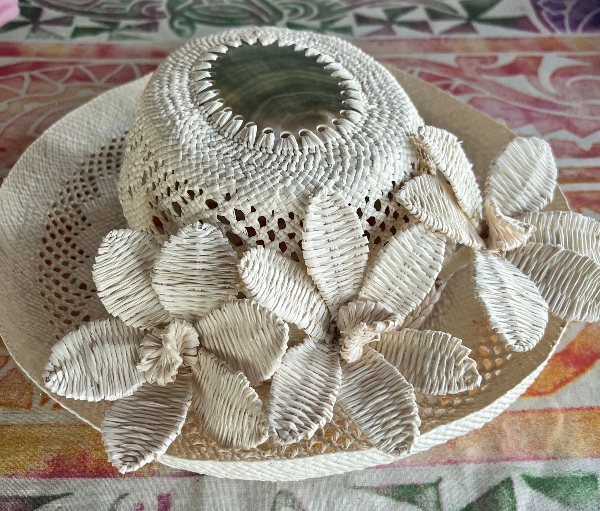
"Each new hat starts with a pearl
shell, harvested from the lagoon by freediving. The men then take the shells
home, and in their little workstations they cut, grind, drill and polish the
shells. Next the Rito is collected. Usually the man will take his bike down to
the airstrip, where there is an abundance of coconut palms. Usually young trees
are selected, negating the need to climb. At the centre of each tree, at the top,
amongst the palm fronds, one will find a new frond that is still vertical and
unopened, this is the Rito; a slash with a bush knife and it falls to the
ground. A surprisingly large amount must be collected just for one hat. For
this reason, every day, one will see bikes going past with Rito on a man’s
shoulder, or in the trailer on the back
Once home, the leaves of the frond
are stripped, a knife is used to remove the thick edges, and then a laborious process
involving separating the fine Rito fibre from the rest of the leaves begins.
Once this is achieved, the fibres are cleaned, then boiled, and either bleached
with lime juice to produce a white hat, or dyed with powder. Eventually, one is
left with bundles of fibres ready for weaving.
The weaving begins by attaching the
fibres to the shell and working outwards. Soon the beginning of the hat is tied
to a wooden mould, most women have many different moulds to suit different
styles, shapes and sizes. From here on in the real art begins, and I will not
try to explain it any further. It is a mystery to me."
From Tom Robinson's Pacific Journey website. A highly recommended read
Origins
THE GILBERT ISLANDS LINK
Australian, Noema Mahitarkiki - a former Penrhyn islander was just 14 when her grandmother taught her how to make the hats. She said the tradition started when men from the Cook Islands visited the Gilbert Islands in the 1800s and brought back wives who had been taught the art of plaiting coconut palm fronds into unique purses, fans and hats. The hats are usually adorned with mother of pearl shell which the men grind and polish.
PLAITING AND CHATTING
Part of the custom involves the women gathering in each others homes to weave, sing and share stories while plaiting the fibres around a solid wooden mahogany hat mould to achieve the perfect shape. The fibres themselves are cut, boiled, dyed and then scraped and it takes about three days to complete the hat.
HEARTS AND MINDS
None of the patterns is written down...islanders just think of them intheir heads and then put their hearts into the work. Some of the hats can sell for hundreds of New Zealand dollars on Rarotonga and further afield. But they're also given as gifts to honoured guests and family.
Source: Arts Nexus, Magazine for Arts and Cultural Development in Far North Queensland, Issue 51, July-Sept 2003
TIVAEVAE/TIVAIVAI
Tivaevae (also spelled "tivaivai") means to stitch or sew and in essence, it's the art of making magnificent patchwork quilting. Islanders apply their unique skills to producing stunning blankets, cushion covers and bedspreads. Cook Islands women often describe the work as "something from the heart".
Now this is definitely not a field in which I'm expert, unlike the women of Atiu to whom I am grateful for this description of their amazing art.
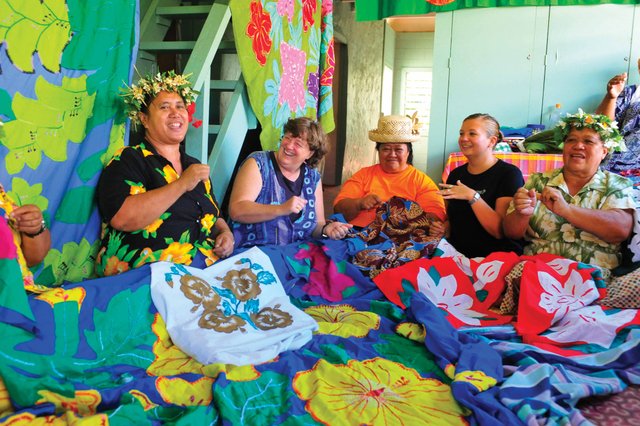
"It is a pieced or appliquéd, sometimes heavily embroidered unquilted coverlet, the colourful post-missionary substitute for the tapa cloth of ancient times.
Even today, on the home island or abroad, a Cook Islander's life is wrapped in tivaivais. Whether for a haircutting ceremony, an important birthday (21st in particular), a wedding or the grave, tivaivais decorate the hall where the celebration takes place, are given to or cover the floor, chair, bed, body or coffin of the revered. They are not normally for sale, but specially made for family members as a sign of affection. "
Photo: David Kirkland
Once a year, usually at the end of November, Atiu's village or church women's groups (vainetini) exhibit their tivaivais and related textile works. Participating in those shows is an honour. Atiu tivaivais are also exhibited annually at the National Museum on Rarotonga and have been shown in museums and galleries abroad.
The biggest exhibition to date was held in 2021 on Rarotonga. The Cook Islands Christian Church (CICC) vainetini exhibition was organised to coincide with the commemoration of the 200th anniversary of the arrival of Christianity on Aitutaki and these pictures give you an idea of the wonderful work on display and the islanders who create it. Women who design, sew and cut tivaevae are called taunga but not all who sew and cut are designers which is considered a special skill. Photos: Cook Islands News
Origins
"There is no written record of how or when the sewing of tivaevae was introduced to the Islands. Some say the wives of the London Missionary Society missionaries, who arrived in 1821, might have taught it; others hold that it was learned from the Tahitian missionaries who helped introduce Christianity to the Cook Islands...Whatever its origin, tivaevae slipped easily and permanently into the daily and ceremonial life of Cook Islands society."
From "The Art of Tivaevae" by Lynnsay Rongokea, University of Hawai'i Press, Honolulu, published by Random House New Zealand, 2001





